Future Trends: In-Game Brand Experience
11 Mar 2021

Here we are with the third and last article for this year’s Future Trends series.
Part of our Customer Engagement content and insight, in collaboration with dotdigital and in partnership with Foresight Factory, our first two articles explored subscriptions and brand coalitions. This final instalment will examine the new engagement opportunities that gaming is offering to brands.
Gaming is a popular pastime and, especially during the pandemic’s lockdowns, video games have become an accepted form of cultural and social entertainment. Just to clarify, in this article we won’t look at gamification (something we discussed last year), but we will delve into actual in-game engagement.
With limited opportunities for social interaction, online gaming and e-sports have become an opportunity for people to interact with others. They can also provide moments of relief during these hard times and, maybe, even represent ways to express our personality and creativity.
Who is the typical gamer? If you are thinking of the stereotyped young male, you are right to some extent. However, many others seem to enjoy some form of computer or video game entertainment on a monthly or weekly basis.
Therefore, if you are thinking about entering the revolutionary world of games with your brand, it’s important to understand the gamer mindset, what they like about games and your brand, and let them feel included and represented within your strategy. How can you improve their overall experience by introducing your brand into the in-game environment?
Thanks to their ubiquity and ability to grab different age groups’ attention, games have turned into a growing and profitable channel for brands. Indeed, the growing cohort of gamers has shown signs of interest in seeing their favourite brands within games they play, as well as being able to engage with those and their real-life products within fantastic digital environments.
Read on and discover how consumers have changed and created new ways to interact with their brands when using games.
The Insights
The digital gamer
In 2020, more than half of British adults (46%) said they played video games at least weekly, via any device, and over a quarter (22%) every day - especially among Gen Z (30%) and male respondents aged 16-34 (35%).
Additionally, 22% of UK adults have watched e-sports or would be keen to do so in the future.
Furthermore, research conducted in June 2020 by Foresight Factory, found that almost one in five (19%) Brits said they had been gaming more since the beginning of the pandemic - including women (16%).
Which of these best describes how often you play computer games/video games via any device?
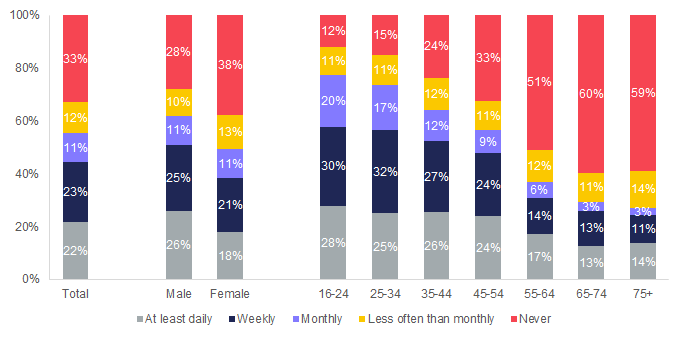
When respondents were asked to rank their favourite entertainment activities, one in four (and over a quarter of Gen Z and Millennial respondents) rated gaming as a highly valued free time activity (15% in 2015).
Among the youngest, aged 12-19 years old, Foresight Factory found that 25% ranked gaming and technology as their number one favourite interest.
The gift of ubiquity
Where do gamers play? New technology that makes playing constantly more entertaining and attractive keeps appearing on the shelves.
Today playing is available on consoles, smartphones, computers, handhelds, VR headsets and smart speakers. The console remains a relatively popular platform, with 47% of UK adults owning a console in 2020, despite a slight decrease in ownership compared to the previous decade (in 2010, console ownership was at 54%). A new generation of console hardware – such as Sony’s PlayStation 5 and Microsoft’s Xbox Series X, suggests console models still and will continue to appeal to players.
However, thanks to smartphones, games can be played anytime and anywhere. In 2019, 52% of British smartphone owners played games on their mobile at least monthly and 38% at least weekly. Additionally, according to Ofcom, 7% had paid to access game apps.
Customers’ interest in other devices to play games
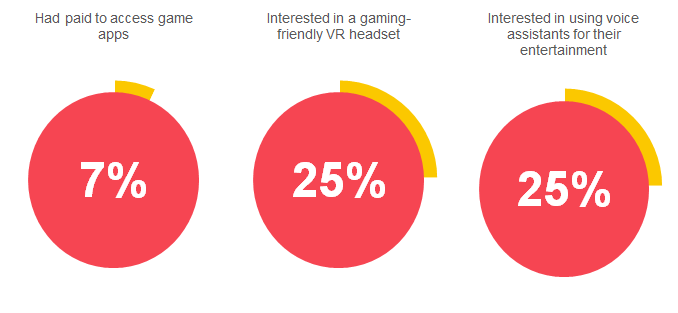
In 2020, one in 10 UK adults said they owned a gaming-friendly VR headset and a further 25% declared an interest in owning one.
Finally, one in four Brits said they were interested in using voice assistants for their own entertainment and Ofcom found that 10% of smart speakers’ owners had used one to play an interactive audio game.
The Opportunities
The pandemic has given gaming a boost. During lockdowns, as a home-based activity, gaming has become a go-to leisure option offering fun, the ability to ‘escape’ into other worlds and in some cases, connect with friends.
Albeit we expect that the time spent in playing games will decrease and shift to other forms of leisure, many consumers will remember the supportive role games have played during the darkness of lockdowns and self-isolation.
Therefore, brands hoping to grab the gaming consumers’ attention with a new home or on-the-go activity must deal with these formidable new competitors.
Brands have already started to embrace new opportunities to connect with the gamer audience: e-sports and livestream sponsorships, digital ad-placement, in-game versions of real-world products, product launches inside game worlds, and even on-brand games of their own (known as adver-gaming).
In other words, brands can start, if they haven’t done already, imagining and planning their current or future strategy, partnering with game creators and making their appearance on this new profitable channel.
Games 1 - Other media 0
Gaming is not the only media competing for customers’ attention and wallet. Consumer spending on physical and digital games accounted for £3.8 billion in 2019, almost half (48%) of UK spend on entertainment media – compared to £1.4 billion spent on music and £2.6 billion on video/film.
Foresight Factory’s data reveals that among young consumers there is a marked preference for gaming over other media with 59% of Brits aged 12-19 years old (79% for boys, 36% for girls) saying they prefer playing video games to watching TV (41%) and one in two have also watched gaming videos online. Furthermore, over one in 10 adults (13%) claimed to access online gaming forums and communities, rising to 21% for men.
Gaming becomes social
Despite gaming often being imagined as an individual form of entertainment, the internet has opened to a new world of shared play and social interactions where players can hang out and socialise.
Fortnite, GTA Online and Fall Guys, just to name a few, are only available in their online formula and they bring millions of gamers together. Indeed, game worlds operate and somehow also compete with social media platforms as they gather people together and celebrate individuals’ unique personalities expressed through gamer tags (names), emotes, in-game achievements and game characters’ items.
In 2020, Foresight Factory found that 29% of UK adults played games online with others through multiple devices on a weekly basis, rising to 36% among men and 56% for those aged between 16 and 24 years old.
Thanks to the video games boost during the pandemic, we have assisted at an accelerated transformation of spaces like online games and associated platforms like Twitch and Discord. These offer consumers the opportunity to lose themselves in fantastical environments and fully invest in world-building. Some of the most popular, like Animal Crossing and Among Us, are constructed on a gentle learning curve, making them pleasant places to spend time.
Reality enters the gaming world
In the last couple of years collaborations between brands and game producers have made their appearance – from fashion and home décor to food and drinks launches.
Real world brands in-game
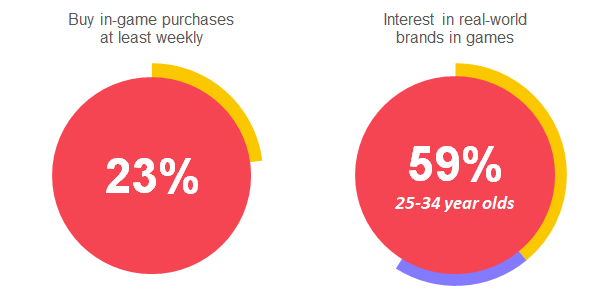
Data reveals that 39% of gamers like seeing real-world brands in games (59% for those aged 25-34 years old) and 23% are making in-game purchases at least weekly.
Given the copious amount of gamers’ time and attention paid to the virtual realm, big brands have invested and created virtual products that live inside gaming worlds. Luxury fashion brands are leading in unifying in-game designs with real-world style.
In summer 2020, a third (37%) of gamers said they would like to see more of their favourite brands in games they play and a third (35%) would like to buy real versions of products they see in games.
Furthermore, half (47%) of gamers would like to test out yet to be released products from their favourite brands in games (62% for the 25-34 age group).
This can be a real opportunity for brands to connect with a new group of customers who may not follow them as a brand traditionally.
Real world brands in-game
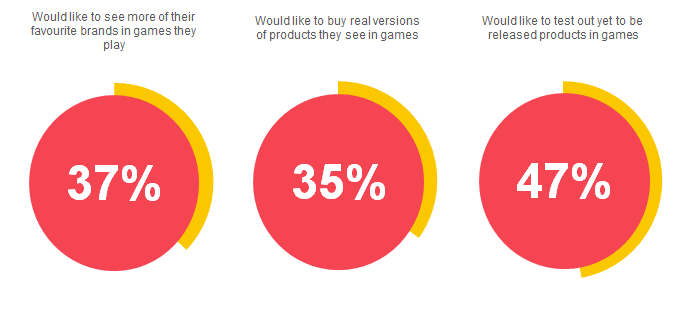
Questions
- Can your brand reach gamers by adapting its offerings for use in-game?
- Can you provide consumers with compelling digital alternatives to typically in-person experiences?
- Can your brand leverage digital gaming as a marcoms channel?
- How does your brand use gaming as a channel for customer engagement?
- How can your brand engage consumers on special occasions? Can you do so via gaming channels?
- Could your brand take inspiration and find interactive ways to launch new products?
- Game streams are a growing channel for customer feedback and interaction. Is your brand using them effectively?
Takeaways
And here some tips for brands looking for new solutions to both old and new problems.
Mind the glitch
As we have seen earlier, consoles, laptops and mobiles will remain the main game devices, but cloud-based services promise a future where games are streamed without the need to own expensive hardware. Meanwhile, VR and spatial computing will grow, especially as AAA VR games appear on the market.
Brands have already started creating accessible games of their own – across mobile, browser and VR. Glitch-free games, yes, the quality is important, can indeed attract customers’ attention, aid pre-purchase research and consideration and, ultimately, allow the brand to be associated with the idea of fun experiences and entertainment.
Be inclusive
In 2019, 51% of British tech early adopters agreed that the media industry in the UK is not representing diversity in TV programmes, games, etc. Therefore, brands have the opportunity to distinguish gaming from other media and address consumers’ dissatisfaction by embracing diversity.
Bringing authentic representation in all aspects of the gaming world means that the efforts to be inclusive resonate at all levels of the business. For many consumers, representation means not only diverse in-game characters but also developers in the business and players themselves.
Offer an escape
The stressful times we are living in make many seek escapism and fun. Games allow customers, at any age, to enjoy themselves, explore their creativity and actively embed themselves in fantasy worlds.
Games also offer a place where people can express themselves in ways, they may be uncomfortable with under their own name, especially given the growing pressure to present a positive image of yourself online.
In 2020, 43% of global consumers said they only posted about positive aspects of their lives, up from 36% in 2018. The anonymity guaranteed by fantastic identities feels liberating and is, paradoxically, a route to expressing our true selves.
Brands can leverage this need for self-expression by offering gaming perks alongside traditional rewards, such as special in-game special items (e.g, Pallete Swap, a new avatar with different lighting effects and animations, etc).
Case Studies
Here are a few examples of how brands have entered the game world and set their presence into customers’ entertainment time.
Burger King: Founding the team at the bottom of English football’s lowest league
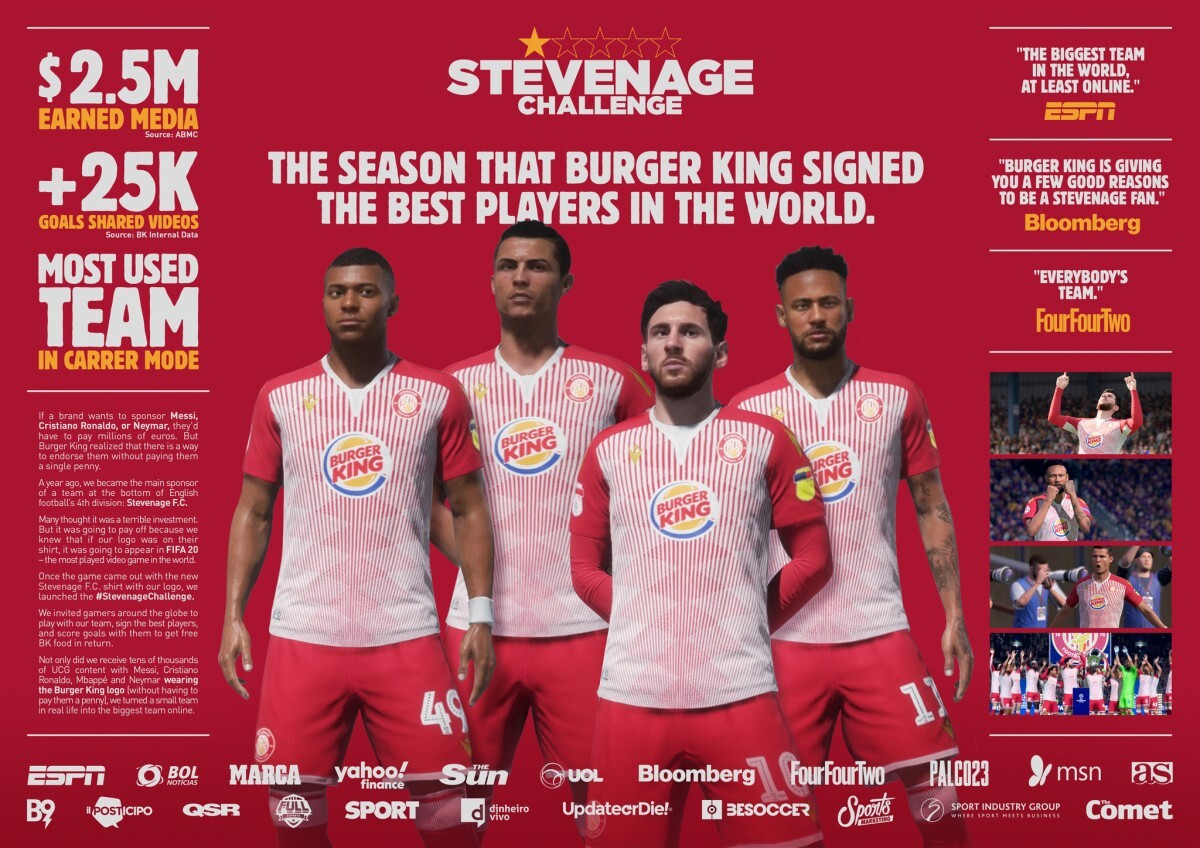
Co-op Academy: A campus tour in the gaming world

Gucci: The Sims’ characters wear sustainable capsule collection
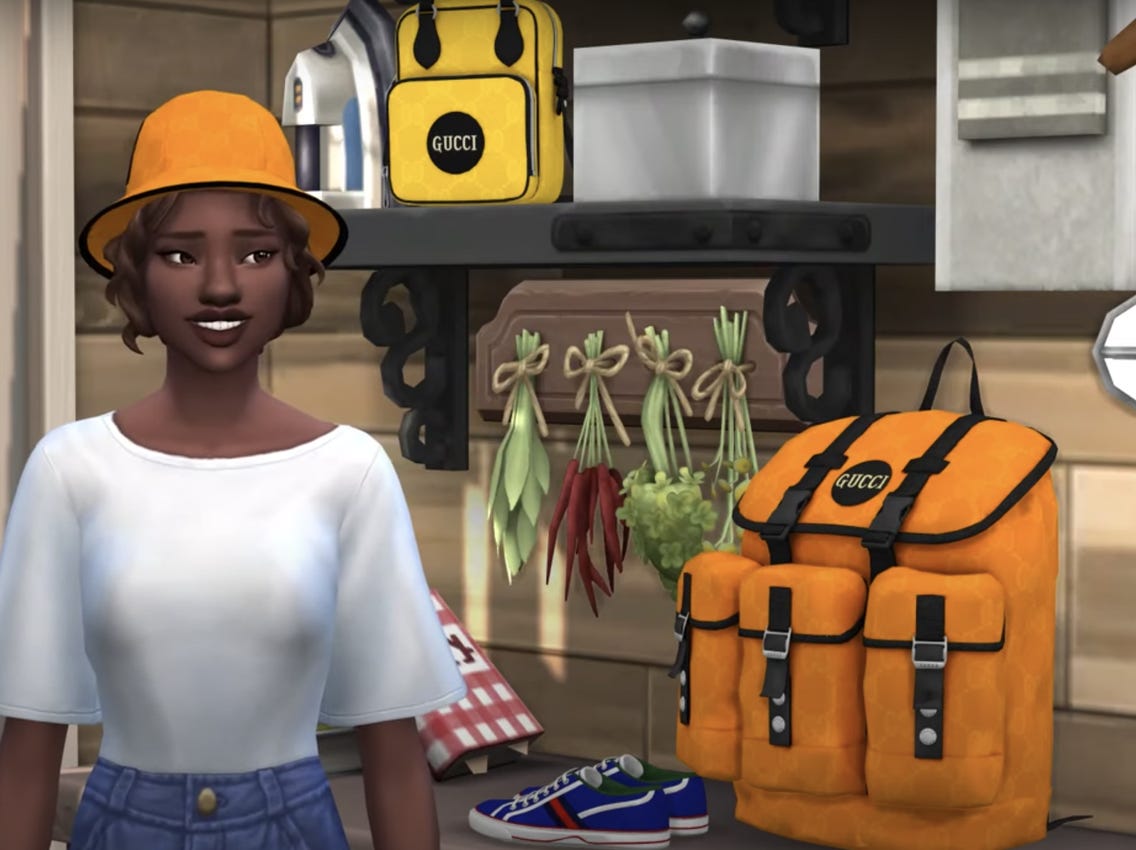
Fortnite: Gamers dress up for an in-game concert

Methodology
‘Future Trends: In-Game Brand Experience’ is an initiative undertaken by the DMA in collaboration with dotdigital and partnership with Foresight Factory.
The report partially reviews data from the ‘Customer Engagement: How to Win Trust and Loyalty’. In addition, the DMA Insight department conducted desk research on industry trends, including the use of Foresight Factory’s FFonline platform.
If you have any questions about the insights or methodology used, you can contact the DMA’s Insight team via email: research@dma.org.uk.
Please login to comment.
Comments